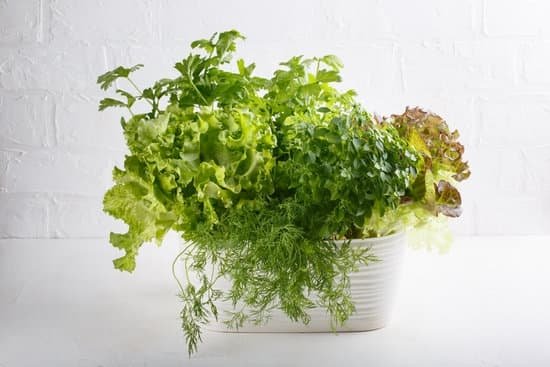Container gardening has become a popular and versatile way for people to enjoy the benefits of gardening in small spaces, urban environments, or even indoors. Whether you have a small balcony, patio, or just limited outdoor space, container gardening allows you to bring nature into your surroundings. In this article, we will explore various ideas for container gardening, from choosing the right containers and plants to designing and maintaining your garden.
When it comes to container gardening, the options are endless. From flowers to vegetables and herbs, there is a wide variety of plants that thrive in containers. The key is selecting the right combination of containers and plants that suit your space and personal preferences. In addition to traditional pots, there are also creative ideas for vertical and hanging container gardens that can add a unique touch to your outdoor or indoor living spaces.
Proper soil, fertilization, watering techniques, and maintenance are essential components of successful container gardening. With the right knowledge and care, you can create a thriving garden that not only enhances your environment but also provides environmental and health benefits. Throughout this article, we will provide valuable tips and solutions to common challenges in container gardening ensuring that your experience is enjoyable and rewarding.
Choosing the Right Containers for Your Garden
When it comes to container gardening, choosing the right containers is a crucial step in ensuring the success of your garden. There are many options available, so it’s important to consider the needs of your specific plants and the overall look you want to achieve. The size, material, and drainage capabilities of your containers can all impact the health and growth of your plants.
One popular option for container gardening is terracotta pots. These are a classic choice and provide good air circulation to the roots of your plants. However, they can dry out quickly and may be more prone to cracking in cold temperatures. Plastic pots are lightweight and affordable, making them a convenient choice for many gardeners. On the other hand, they don’t offer as much breathability as terracotta or clay pots.
Another consideration when choosing containers for your garden is size. Larger containers can hold more soil and water, which can create a more stable environment for your plants. Smaller containers may restrict root growth, leading to stunted or stressed plants. It’s also important to ensure that your containers have adequate drainage holes to prevent waterlogging.
In addition to traditional pots and planters, there are many creative ideas for container gardening that can add visual interest to your space. Upcycled items like old bathtubs or wooden crates can make unique and charming containers for your plants. Vertical gardens using hanging shoe organizers or wall-mounted planters provide an innovative way to maximize limited space while adding greenery to your home or outdoor area.
| Container Type | Pros | Cons |
|---|---|---|
| Terracotta Pots | Good air circulation Classic look | Dries out quickly Prone to cracking |
| Plastic Pots | Lightweight Affordable | Less breathable Not as aesthetically pleasing |
| Upcycled Items (e.g. old bathtub) | Unique Adds visual interest | Potential drainage issues Limited sizes/shapes available |
Selecting the Perfect Plants for Container Gardening
When it comes to container gardening, choosing the right plants is essential for a successful and thriving garden. Whether you have limited space, want to add new dimensions to your existing garden, or simply love the idea of growing your own flowers or vegetables, there are plenty of plants that are perfect for container gardening.
Consider Your Climate and Sunlight
Before selecting plants for your container garden, it’s important to consider the climate and amount of sunlight in your area. Some plants thrive in full sun, while others prefer partial shade. Take note of how much sunlight your chosen location receives throughout the day and select plants that are suitable for those conditions.
Choose Plants That Thrive in Containers
Not all plants are well-suited for container gardening. Look for varieties specifically labeled as “patio,” “dwarf,” or “compact” – these tend to do well in containers. Herbs like basil, thyme, and rosemary flourish in pots, as do vegetables like cherry tomatoes, lettuce, and peppers. Flowers such as petunias, geraniums, and pansies also make beautiful additions to any container garden.
Think About Growth Habits
Consider the growth habits of the plants you choose. Some may spread out and trail over the edges of the container, while others may grow tall and upright. Mixing different growth habits can create a visually appealing container garden with varying heights and textures.
With these ideas for container gardening in mind, it’s important to remember that experimenting with different plants is part of the fun. Don’t be afraid to try new things and see what works best for your unique space and personal preferences.
Tips for Proper Soil and Fertilization
When it comes to container gardening, proper soil and fertilization are essential for the health and success of your plants. In this section, we will explore some tips to ensure that your container garden has the best possible growing conditions.
Choosing the Right Soil
The soil you use for your container garden is crucial, as it provides nutrients and support for your plants’ roots. Look for a high-quality potting mix that is specifically formulated for container gardening. These mixes are designed to provide excellent drainage, aeration, and water retention, which are all important factors for healthy plant growth in containers.
Understanding Fertilization
In addition to choosing the right soil, proper fertilization is important for ensuring that your container plants have access to essential nutrients. Consider using a slow-release fertilizer or organic options to provide a steady supply of nutrients over time. It’s also important to follow the recommended dosage on the fertilizer label to avoid over-fertilizing, which can harm your plants.
Frequent Monitoring and Adjustment
Regularly check the moisture levels and nutrient content of your container garden’s soil. Depending on the plants you have chosen, you may need to adjust your watering and fertilization routine throughout the growing season. Pay attention to any signs of nutrient deficiencies or excesses in your plants, such as yellowing leaves or stunted growth, and make adjustments as needed.
By following these tips for proper soil and fertilization in your container garden, you can create an optimal environment for your plants to thrive. Healthy soil and adequate nutrition are key elements in successful container gardening and will contribute to beautiful and bountiful results with minimal effort.
Designing Your Container Garden for Maximum Impact
When it comes to designing your container garden for maximum impact, there are several key factors to consider. The arrangement of your plants, the colors and textures of your containers, and the overall placement of your garden can all contribute to creating a visually stunning and cohesive look. Here are some tips to help you design a container garden that makes a statement:
- Consider the size and shape of your containers. Mix and match different sizes and shapes to add visual interest to your garden.
- Pay attention to color coordination. Choose containers in complementary or contrasting colors that will enhance the appearance of your plants.
- Think about the height and placement of your plants. Create depth by mixing tall, medium, and trailing plants within one container or by arranging multiple containers at varying heights.
In addition to these design elements, you can also incorporate decorative elements such as fairy lights, colorful pebbles, or trellises to add even more impact to your container garden. Ultimately, the goal is to create a space that is not only functional but also visually appealing.
Another way to design your container garden for maximum impact is by incorporating themed gardens or unique planting ideas. For example, you could create an herb garden in a set of coordinating pots for both aesthetic appeal and practical use in cooking. Or try planting a variety of vibrant flowers in mismatched vintage teacups for a charming and whimsical look.
By carefully considering these elements when designing your container garden, you can create a beautiful and striking outdoor space that will be sure to impress anyone who sees it. Whether you have limited space or simply want to add some greenery to your patio or balcony, there are countless creative ideas for container gardening that can elevate your outdoor environment with ease.
Maintaining and Watering Your Container Garden
Once you have set up your container garden, it is crucial to maintain it properly in order to ensure the health and growth of your plants. Regular maintenance includes monitoring for pests, diseases, and maintaining proper watering practices.
Watering container gardens can be a bit tricky as they tend to dry out faster than traditional gardens. One of the key ideas for container gardening is to make sure that you are not over or under watering your plants. The type of container, soil, and plant will determine how often you need to water. As a general guide, most container gardens will need water every day or every other day during the growing season.
In addition to regular watering, it is important to regularly check for any signs of pests or diseases that may be affecting your plants. Inspecting your plants frequently can help catch any issues early on before they become major problems. This allows you to take appropriate action such as using organic pest control methods or removing affected parts of the plants.
| Maintaining and Watering | Container Garden |
|---|---|
| Regular maintenance | Proper watering practices |
| Pest and disease monitoring | Be mindful of Pests |
Remember that different types of plants have different water needs, so it’s important to research each plant’s specific requirements. By following these maintenance tips for your container garden, you can ensure that your plants thrive throughout the growing season.
Creative Ideas for Vertical and Hanging Container Gardens
If you’re looking to add a unique and space-saving element to your container gardening, consider exploring vertical and hanging container gardens. These types of gardens are perfect for those with limited outdoor space or who simply want to add some visual interest to their garden area.
One creative idea for vertical gardening is to use a trellis or a wall-mounted grid system to grow climbing plants such as tomatoes, cucumbers, or pole beans. By utilizing the vertical space, you can maximize your growing area and also create an attractive focal point in your garden.
Hanging container gardens offer another opportunity for creativity in your gardening endeavors. Consider using hanging baskets to grow colorful flowers, trailing vines, or even herbs and lettuces. You can hang these containers from a pergola, porch ceiling, or even strategically placed hooks throughout your outdoor space.
Another fun twist on hanging container gardens is the use of repurposed items such as old buckets, teacups, or even rain gutters. These unique containers not only add visual interest but also show off your creative side when it comes to gardening.
Experimenting with vertical and hanging container gardens allows for endless possibilities when it comes to designing a visually appealing and functional outdoor space. Whether you have a small balcony or a sprawling backyard, incorporating these creative ideas into your container gardening can bring new life and excitement to your outdoor oasis.
Problem-Solving for Common Container Gardening Challenges
Container gardening is a popular way for people with limited space or mobility to enjoy the benefits of gardening. However, it does come with its own set of challenges. Here are some common issues that container gardeners face, along with some solutions to help you overcome them:
1. Lack of drainage: Poor drainage can lead to waterlogged soil and root rot in your plants. Make sure to choose containers with drainage holes, and use a well-draining potting mix. You can also add a layer of gravel at the bottom of the container to improve drainage.
2. Overwatering: It’s easy to overwater plants in containers, especially if they are located in a sunny spot where they dry out quickly. Be mindful of how much water your plants actually need, and consider using self-watering containers or adding a watering system to maintain proper hydration levels.
3. Limited space: If you’re working with a small balcony or patio, finding room for all your plants can be a challenge. Consider using vertical planters, hanging baskets, or railing planters to maximize your growing space without taking up valuable floor space.
4. Pests and diseases: Container gardens are not immune to pests and diseases. Keep an eye out for any signs of trouble, such as yellowing leaves or chewed foliage, and take action promptly. You can use organic pest control methods or introduce beneficial insects to manage these issues.
By understanding and addressing these common challenges, you can create and maintain a thriving container garden that brings joy and beauty to your outdoor living space.
The Benefits of Container Gardening
Container gardening offers numerous benefits for both the environment and one’s personal health. One of the most significant environmental benefits of container gardening is the reduction in water usage. Traditional gardening often requires large amounts of water, which can be wasteful and contribute to water scarcity in some regions.
However, with container gardening, it is possible to conserve water by watering only the specific plants in containers rather than an entire garden. This can lead to a significant decrease in water usage while still allowing individuals to enjoy growing their own plants.
In addition to its environmental impacts, container gardening also has positive effects on personal health. Studies have shown that engaging in gardening activities can reduce stress and anxiety, improve mental well-being, and even enhance physical health through moderate exercise.
Container gardening provides an accessible way for individuals who may not have access to traditional garden space to experience these benefits. Whether it is on a balcony, patio, or even indoors, container gardening allows people to connect with nature and reap the rewards of growing their own plants.
Furthermore, another significant health impact of container gardening is the potential for growing one’s own fresh produce. By cultivating herbs, vegetables, and fruits in containers, individuals have access to homegrown organic produce that is free from pesticides and other harmful chemicals.
This promotes a healthier diet while also reducing reliance on store-bought produce that may have been treated with potentially harmful substances. Overall, the combination of environmental conservation and positive effects on personal health make container gardening a valuable practice for individuals looking to make a positive impact on both themselves and the world around them.
Conclusion
In conclusion, container gardening offers a versatile and flexible way to bring the joys of gardening to any space, no matter how small or limited. Whether you have a tiny apartment balcony, a sunny patio, or even just a windowsill, there are endless possibilities for creating your own lush and vibrant oasis.
By choosing the right containers, selecting the perfect plants, ensuring proper soil and fertilization, and maintaining your garden with regular watering and care, you can experience the many benefits of container gardening firsthand.
With creative ideas for vertical and hanging gardens, you can maximize limited space and create stunning green displays that bring life and beauty to any environment. The versatility of container gardening allows for endless opportunities to experiment with different designs, colors, textures, and arrangements that reflect your personal style and taste.
As you encounter common challenges in container gardening, such as pests or disease, there are solutions available to help you overcome these obstacles and continue enjoying the pleasures of tending to your plants.
The environmental and health benefits of container gardening make it an ideal hobby for anyone seeking a sustainable and rewarding activity. Not only does it provide fresh air, stress relief, and physical activity through nurturing plants, but it also contributes to better air quality by reducing carbon dioxide levels.
Additionally, growing your own herbs or vegetables in containers can lead to healthier eating habits by making fresh produce more accessible. Overall, I encourage readers to take inspiration from the ideas for container gardening discussed here and embark on their own journey towards cultivating beautiful gardens in containers.
Frequently Asked Questions
What Foods Are Good for Container Gardening?
Container gardening is versatile and can accommodate a variety of plants, but some particularly good options include herbs like basil, mint, and cilantro, as well as small vegetables like cherry tomatoes, peppers, and lettuce. Flowers like petunias, marigolds, and pansies also thrive in containers.
How Can I Make My Container Garden Look Good?
To make your container garden look good, consider using a variety of containers in different sizes and colors to create visual interest. Grouping containers together can create a lush display, while adding some vertical elements like trellises or hanging baskets can add dimension to your garden.
What Is the Rule of Thumb for Container Gardening?
The rule of thumb for container gardening is to ensure that your containers have proper drainage to prevent waterlogging the roots of your plants. Additionally, it’s important to use high-quality potting soil and choose a container size that accommodates the growth of the plant throughout its lifespan.
Lastly, be mindful of proper watering and sunlight requirements for each plant in your container garden.

Welcome to my gardening blog! I am passionate about plants and enjoy sharing my knowledge and experiences with others. In this blog, I will write about everything related to gardening, from tips on how to get started to updates on my own garden projects.





